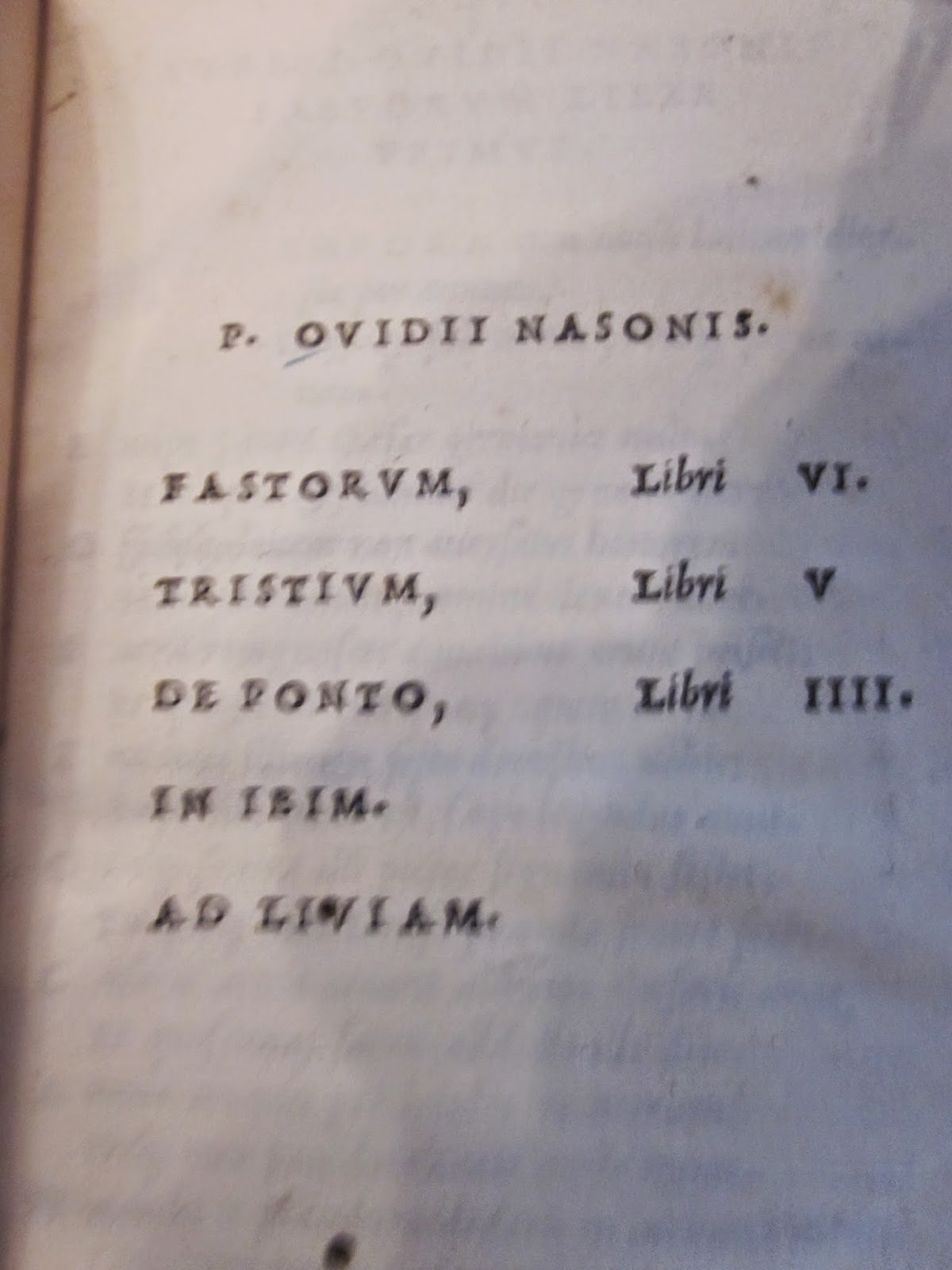I’m going to devote this post to looking at a few examples
of printing from the Aldine Press. Aldine editions of classical literature were
both essential for the dissemination of ancient learning during the Renaissance
and extremely innovative in terms of the changes they brought to typography and
the physical form of the book. Besides the fact that many important classical
texts initially saw print as one of his Aldines, Aldus Manutius (1449-1515) was
the first printer to issue reliable Greek and Latin texts in the affordable
octavo size, allowing learning to reach a much wider audience than previously
possible. Even more famously, italic fonts were first invented and commissioned
for these editions. There is no question that Renaissance humanism would not
have had the same influence without the existence of these famous books, and, in
a sense, all affordable editions of classical texts, whether Penguin Classics
or from the Loeb Classical Library, are heirs to the tradition established by Manutius.
Printed in Venice from 1515-16 and edited by the Venetian
humanist, poet, and diplomat, Andrea Navagero (1483-1529), this three volume
set is the second Aldine edition of Ovid’s works. Unfortunately, it is bound in
nineteenth-century black morocco with red leather doublures—a beautiful but not
contemporaneous binding.
Ovid, of course, is best known for his Metamorphoses, a poem in fifteen books featuring narratives primarily drawn from classical legend in which characters undergo miraculous transformations and transfigurations. Yet Ovid also composed collections of sophisticated love elegies called the Amores, a collection of epistles in elegiac couplets in the voice of famous women called the Heroides, a manual on the arts of seduction called Ars Amatoria, and a poetic account of the Roman religious calendar known as the Fasti. Like his contemporaries (or near contemporaries) Horace and Virgil, Ovid lived during the transformative reign of the first Emperor of Rome, Augustus. However, the licentiousness, eroticism, and rebellious nature of his work contrasts sharply with the high-minded seriousness characteristic of the Augustan period. At odds with the severe morality inculcated by the Emperor, Ovid fell out of favor and was banished to Tomis on the Black Sea where the famously cosmopolitan and urbane poet spent the reminder of his life in miserable exile.
Ovid, of course, is best known for his Metamorphoses, a poem in fifteen books featuring narratives primarily drawn from classical legend in which characters undergo miraculous transformations and transfigurations. Yet Ovid also composed collections of sophisticated love elegies called the Amores, a collection of epistles in elegiac couplets in the voice of famous women called the Heroides, a manual on the arts of seduction called Ars Amatoria, and a poetic account of the Roman religious calendar known as the Fasti. Like his contemporaries (or near contemporaries) Horace and Virgil, Ovid lived during the transformative reign of the first Emperor of Rome, Augustus. However, the licentiousness, eroticism, and rebellious nature of his work contrasts sharply with the high-minded seriousness characteristic of the Augustan period. At odds with the severe morality inculcated by the Emperor, Ovid fell out of favor and was banished to Tomis on the Black Sea where the famously cosmopolitan and urbane poet spent the reminder of his life in miserable exile.
The second item I want to show here is one the jewels of the
Center’s collection. This Aldine 1503 Euripides is the first collected edition
of the dramatist’s works, the editio
princeps for many of the great tragedian’s works.
Among the most significant dramatists in classical antiquity, Euripides was one of the three great tragedians of ancient Athens, along with Sophocles and Aeschylus.Within classical tragedy, Euripides is famous for depicting female characters and other figures that were frequently marginalized by Athenian society. Because of this emphasis, he is often thought of as the classical tragedian that has the most to say to modern society. Euripides composed between ninety-two and ninety-five plays, of which eighteen or nineteen (the play Rhesus is contested) have survived, a transmission made possible in part because of this edition. The title page of this Aldine claims that it contains sixteen plays, but there are actually seventeen, with Hercules Furens added at the end of the second volume. Electra, one of the dramatist’s most important works, unfortunately isn’t included here (Electra’s editio princeps wouldn’t be printed until 1545). Like the Ovid shown above, this book is bound nineteenth-century black morocco with red leather doublures.
Among the most significant dramatists in classical antiquity, Euripides was one of the three great tragedians of ancient Athens, along with Sophocles and Aeschylus.Within classical tragedy, Euripides is famous for depicting female characters and other figures that were frequently marginalized by Athenian society. Because of this emphasis, he is often thought of as the classical tragedian that has the most to say to modern society. Euripides composed between ninety-two and ninety-five plays, of which eighteen or nineteen (the play Rhesus is contested) have survived, a transmission made possible in part because of this edition. The title page of this Aldine claims that it contains sixteen plays, but there are actually seventeen, with Hercules Furens added at the end of the second volume. Electra, one of the dramatist’s most important works, unfortunately isn’t included here (Electra’s editio princeps wouldn’t be printed until 1545). Like the Ovid shown above, this book is bound nineteenth-century black morocco with red leather doublures.






